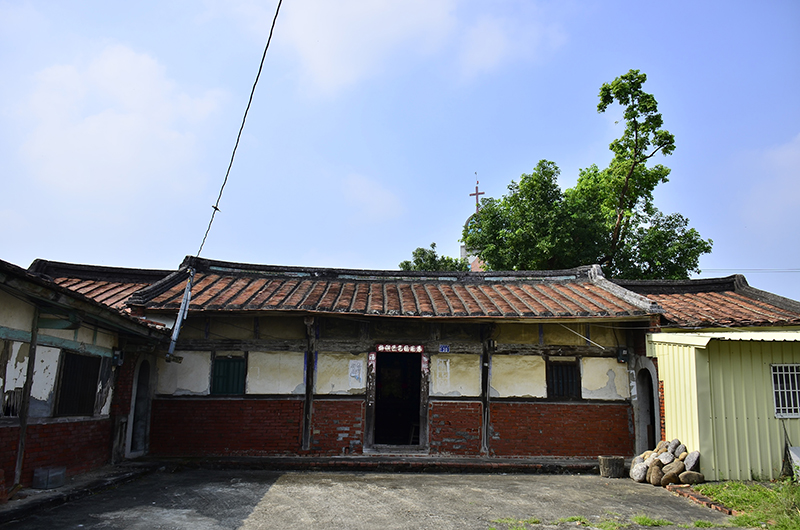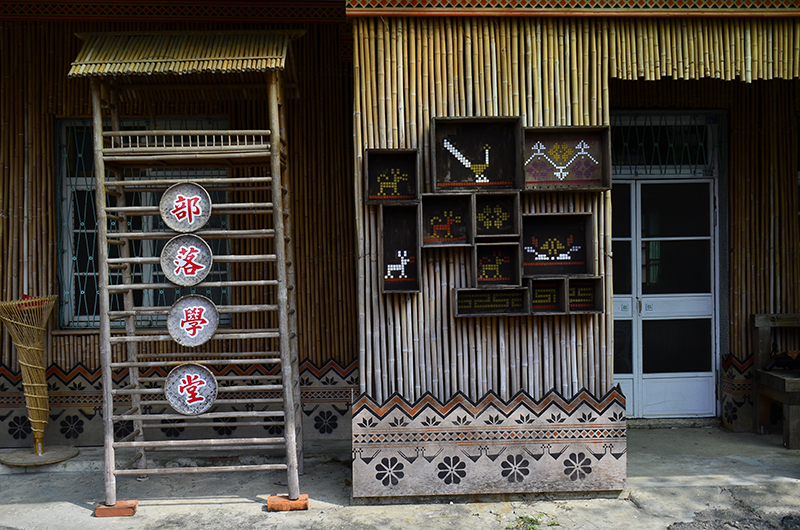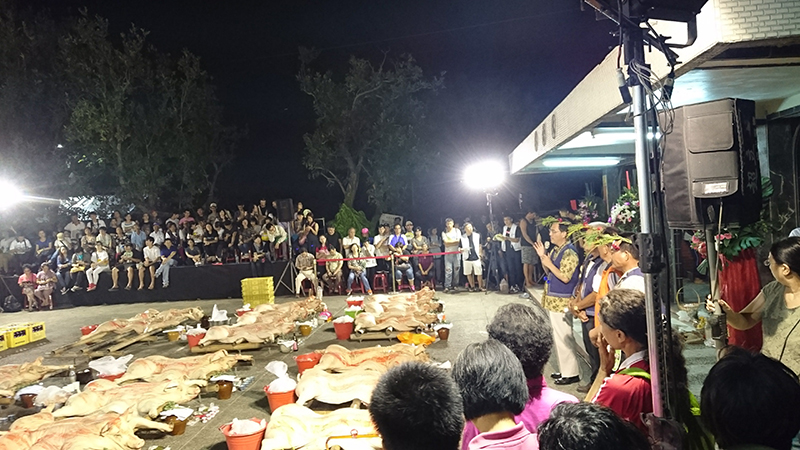Above: The Kabuasua fill glass, ceramic or wine containers with water (“Xiangshui”) and place green branches in them. The “Xiangshui” symbolizes that ancestral spirits are protecting the people.
One of the most well-known Taiwan Plains Indigenous Peoples to the present public, the Siraya people not only has been fighting fiercely for name rectification with the Tainan City Government for the past decades, but also are the first group of indigenous people to have contact with individuals from other countries in history. The “Formosans” the Netherlands referred to were actually the four major communities in Tainan (Xingang, Xiaolong, Backloun, and Madou), the indigenous peoples who are now known as the Siraya.

The bamboo houses at Kabuasua Village.

The village school at Kabuasua Village.
Siraya People
on the Seacoast, Low Elevation Mountains, and Plains
The Siraya, who originally lived on the coastal plains in Tainan, has witnessed how regimes turned their homeland into a ruling base in the past 400 years. The Netherlands colonists used Tainan as a basecamp for trade. Because of missionary purposes, the culture and language of the Siraya was recorded in detail and unintentionally became crucial data sources for current culture revival projects. However, the Siraya was later forced to migrate due to large scale soldier-gathering schemes during the Period of Ming Zheng, and non-indigenous immigration and indigenous policies during the Qing Dynasty. The Siraya gradually moved from the coastlines to low elevation mountain areas in Tainan. During the Japanese Occupation Period, the regime's indigenous schemes caused community members move to low elevation mountain areas in Kaohsiung and eastern Hualien. Now there are only very few Siraya living in their original Tainan Plain home villages, next to non-indigenous villages and towns.
It is not far off the truth to say that the Siraya is the indigenous group that has the most foreign power exposure in the past 400 years. The Siraya was used and tricked by the Netherlands, which led to deadly internal conflicts such as the Madou Incident. The Siraya’s traditional belief system was also brutally destroyed: in order to reduce the influence of Inibs (female village priests) in communities, the Netherlands “banished” over 200 Inibs's to other places. Yet the surviving Siraya did not just passively wait for their fate to be determined. They used tools left behind by the regimes and consciously chose their own family name, language, and written words. Now many Siraya people carry a rare Chinese character family name connected with a Siraya-language family name suffix, for example: Akatuang, Talavan, Domok, Talalomay, Tavali, etc. After the Netherlands left Taiwan, the Siraya still used latin letters to write their own language, keep books, or put together contracts for 160 to 170 years. These documents from various sources were later collectively called the “Xingang Documents”. The Siraya has the longest history of writing in their own native language among all Taiwanese indigenous peoples.

Donghe Village in Dongshan District, Tainan City. It was known as “Kabuasua”. The sacred annual ritual celebrating the birthday of “Alimu” is a major event at Kabuasua Village. Pork and wine offerings are important rites.
Charging Forward
on the Path of Culture Revival
Whether it is because they do not agree with the methods of the regime, or because they know how to maintain their dignity in trying environments, the Siraya people are known for their achievements in modern Taiwanese Plains Indigenous Peoples identity and name rectification movements and culture revival efforts. For example, the Toushe Village in Danei Township (Tainan), and Kabuasua Village in Dongshan Township are famous for their strong and unifying ancestral spirit worshipping rites, annual Night Rituals, and “Kan-hi” culture. Furthermore, the Siraya people have large communal temples for A-li Tsoo, A-li Mu, or Kuva. Branches of Taiwan Agrimony and other plants are placed in a bottle of “Xiangshui”, which symbolizes the power of spirits, to protect worshipers. The Night Ritual follows strict procedures and lasts well into midnight. The A-li Tsoo belief still lives on in the daily lives of the people as well. Community members still hang plastic bags carrying Taiwan Agrimony branches on their scooters, and parents give the branches to children to wish them safe travels when they leave the house.
Some villages chose to carry on their traditional ancestral spirits beliefs, while others became pious Presbyterian Church followers, such as Koupi Village in Tainan Xinhua District, Gongguan Village in Zuozhen District, and Muzha Village in Kaohsiung Neimen District. Yet Christianity did not stop the Siraya from reviving their culture. Through the Gospel of St. Matthew written in the Xingang language of Netherlands, the Siraya integrated language learning and promotional work and name rectification related projects into church activities. Church members could also do transition and documentation work on oral history and traditional arts when they visited the elders in the community to keep them company.
Although forced to relocate to rural mountain foot areas of Tainan, Kaohsiung, and eastern Hualien, the Siraya still managed to find a way to live with dignity. The younger generation continues to seek their own ways to protect the very identity and values that have been safeguarded by their ancestors for over 400 years.




